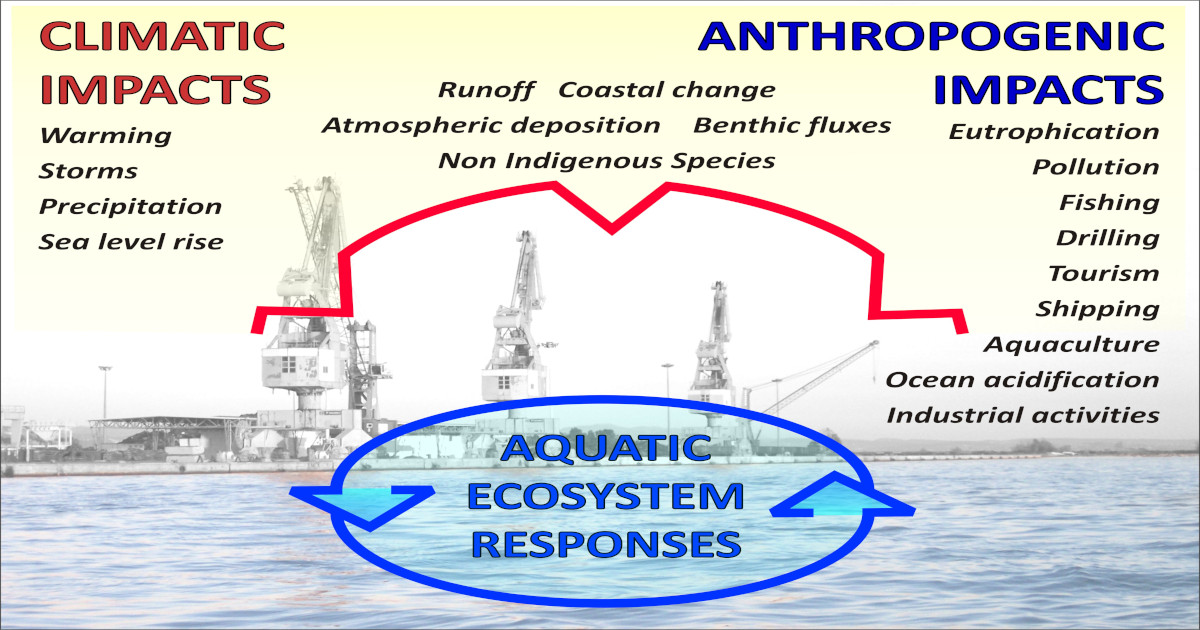- 3.0Impact Factor
- 6.0CiteScore
- 20 daysTime to First Decision
Anthropogenic and Climatic Disturbances in Aquatic Ecosystems: Multiscale Spatio-Temporal Evolution and Effects
This special issue belongs to the section “Biodiversity and Functionality of Aquatic Ecosystems“.
Special Issue Information
Dear Colleagues,
Freshwater systems, coastal zones and open sea regions are currently affected by a variety of hydrological, geochemical and biological transformations originated by a complex interaction of anthropogenic and climatic disturbances, which mainly act on spatial scales ranging from meso to mega and temporal scales from daily to centennial.
The spread of human-derived substances in aquatic systems and their mobilization through atmospheric and benthic fluxes have often caused the degradation of water quality, whereas the intensive usage of ecosystem services has caused the impoverishment of natural resources. Aquatic environments are also exposed to increasing disturbances originated by climate changes. Freshwater and coastal systems have long been impacted by the alteration of meteorological conditions, runoff, sediment transport, extreme events and sea level rise. More recently, oceanographic properties and circulation in open sea regions have also been seen to respond to climatic oscillations and trends.
This Special Issue is focused on the analysis of the evolution of aquatic ecosystems over a large variety of spatial and temporal scales, in order to identify the effects of concomitant anthropogenic and climatic forcings. Aquatic systems from tropical to polar regions can be considered. We encourage the submission of specific and multidisciplinary studies based on field and laboratory experiments, the reanalysis of data series, and ecological modelling, as well as papers providing reviews and synthesis of the scientific literature.
This Special Issue is the second volume, following the previous one titled “Anthropogenic and Climatic Disturbances in Freshwater and Coastal Ecosystems: Interactive Impacts and Expected Threats.”
Dr. Stefano Cozzi
Guest Editor
Manuscript Submission Information
Manuscripts should be submitted online at www.mdpi.com by registering and logging in to this website. Once you are registered, click here to go to the submission form. Manuscripts can be submitted until the deadline. All submissions that pass pre-check are peer-reviewed. Accepted papers will be published continuously in the journal (as soon as accepted) and will be listed together on the special issue website. Research articles, review articles as well as short communications are invited. For planned papers, a title and short abstract (about 250 words) can be sent to the Editorial Office for assessment.
Submitted manuscripts should not have been published previously, nor be under consideration for publication elsewhere (except conference proceedings papers). All manuscripts are thoroughly refereed through a single-blind peer-review process. A guide for authors and other relevant information for submission of manuscripts is available on the Instructions for Authors page. Water is an international peer-reviewed open access semimonthly journal published by MDPI.
Please visit the Instructions for Authors page before submitting a manuscript. The Article Processing Charge (APC) for publication in this open access journal is 2600 CHF (Swiss Francs). Submitted papers should be well formatted and use good English. Authors may use MDPI's English editing service prior to publication or during author revisions.
Keywords
- water quality
- ecosystem structure
- ecosystem services
- climatic oscillations and trends
- runoff
- continental loads
- biogeochemical cycling
- river and lake systems
- coastal zones
- open sea environments

Benefits of Publishing in a Special Issue
- Ease of navigation: Grouping papers by topic helps scholars navigate broad scope journals more efficiently.
- Greater discoverability: Special Issues support the reach and impact of scientific research. Articles in Special Issues are more discoverable and cited more frequently.
- Expansion of research network: Special Issues facilitate connections among authors, fostering scientific collaborations.
- External promotion: Articles in Special Issues are often promoted through the journal's social media, increasing their visibility.
- e-Book format: Special Issues with more than 10 articles can be published as dedicated e-books, ensuring wide and rapid dissemination.

